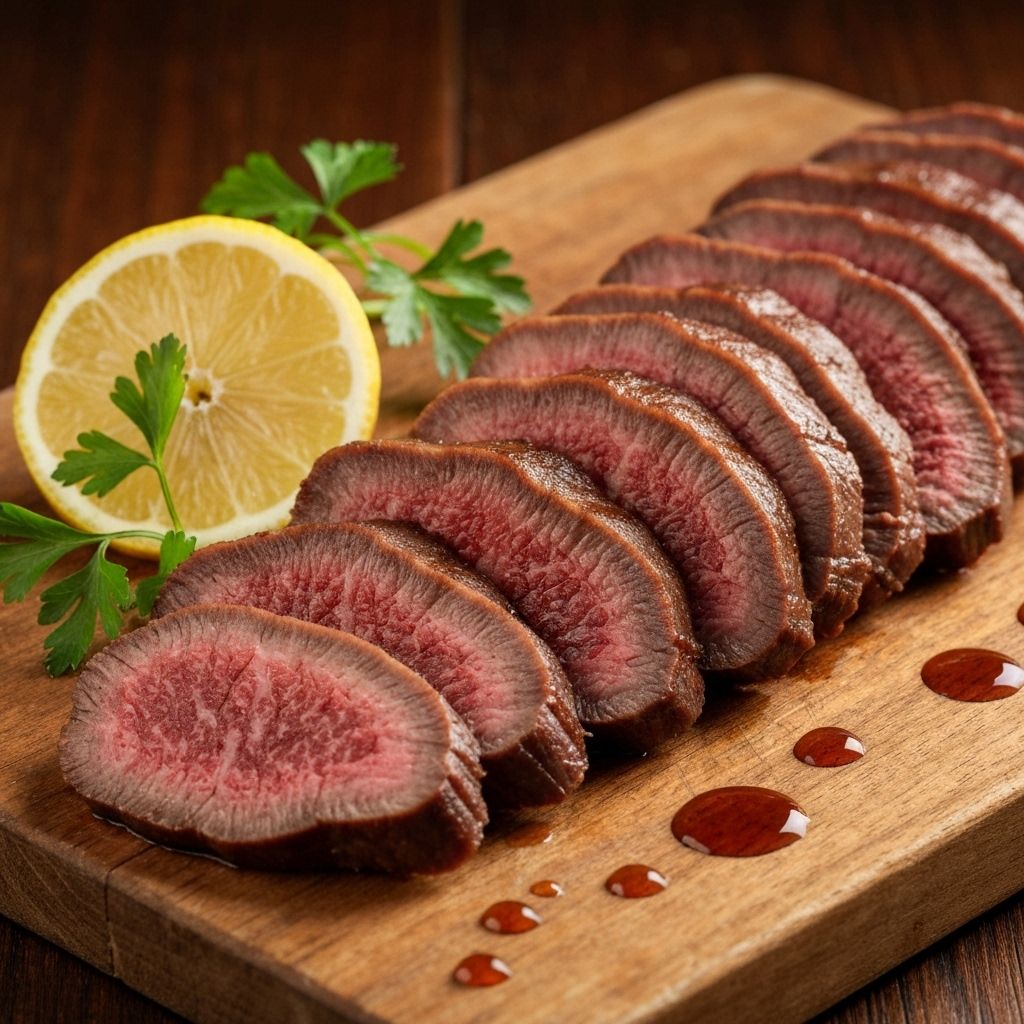Thick-Cut Beef Tongue Guide

Beef tongue, known as "gyutan" in Japanese cuisine, is a delicacy prized for its tender texture and rich flavor when properly prepared. This guide covers everything you need to know about selecting and cooking thick-cut beef tongue.
What is Thick-Cut Beef Tongue?
Thick-cut beef tongue refers to slices of beef tongue cut approximately 1/4 to 1/2 inch thick, popularized in Japanese yakiniku restaurants. The thickness allows for a perfect balance of crispy exterior and tender, juicy interior when grilled.
Selecting Quality Beef Tongue
- Color: Look for beef tongue with a consistent pink to light red color
- Texture: The meat should be firm to the touch with minimal discoloration
- Preparation: Pre-sliced thick-cut tongue saves preparation time
- Source: Choose tongue from reputable suppliers that follow proper handling procedures
Cooking Methods
Grilling (Recommended)
- Preheat your grill or griddle to high heat (400-450°F)
- Lightly season the beef tongue with salt and pepper
- Grill for 2-3 minutes per side until lightly charred
- The tongue should be crispy on the outside but still tender inside
- Serve immediately with lemon juice and scallions
Air Fryer Method
- Preheat air fryer to 400°F
- Arrange tongue slices in a single layer
- Cook for 8-10 minutes, flipping halfway through
- Check for desired crispiness and adjust time as needed
Serving Suggestions
Beef tongue pairs beautifully with:
- Fresh lemon juice and sea salt
- Scallions and sesame oil
- Spicy miso sauce
- Pickled vegetables
- Steamed rice and kimchi
Storage Tips
Fresh beef tongue should be stored in the refrigerator and used within 2-3 days. For longer storage, freeze in airtight packaging for up to 3 months. Thaw in the refrigerator overnight before cooking.
Pro Tip
Don't overcook beef tongue! The key to tender, juicy tongue is quick, high-heat cooking. Overcooking will result in a tough, chewy texture. Aim for a light char on the outside while keeping the inside tender and slightly pink.